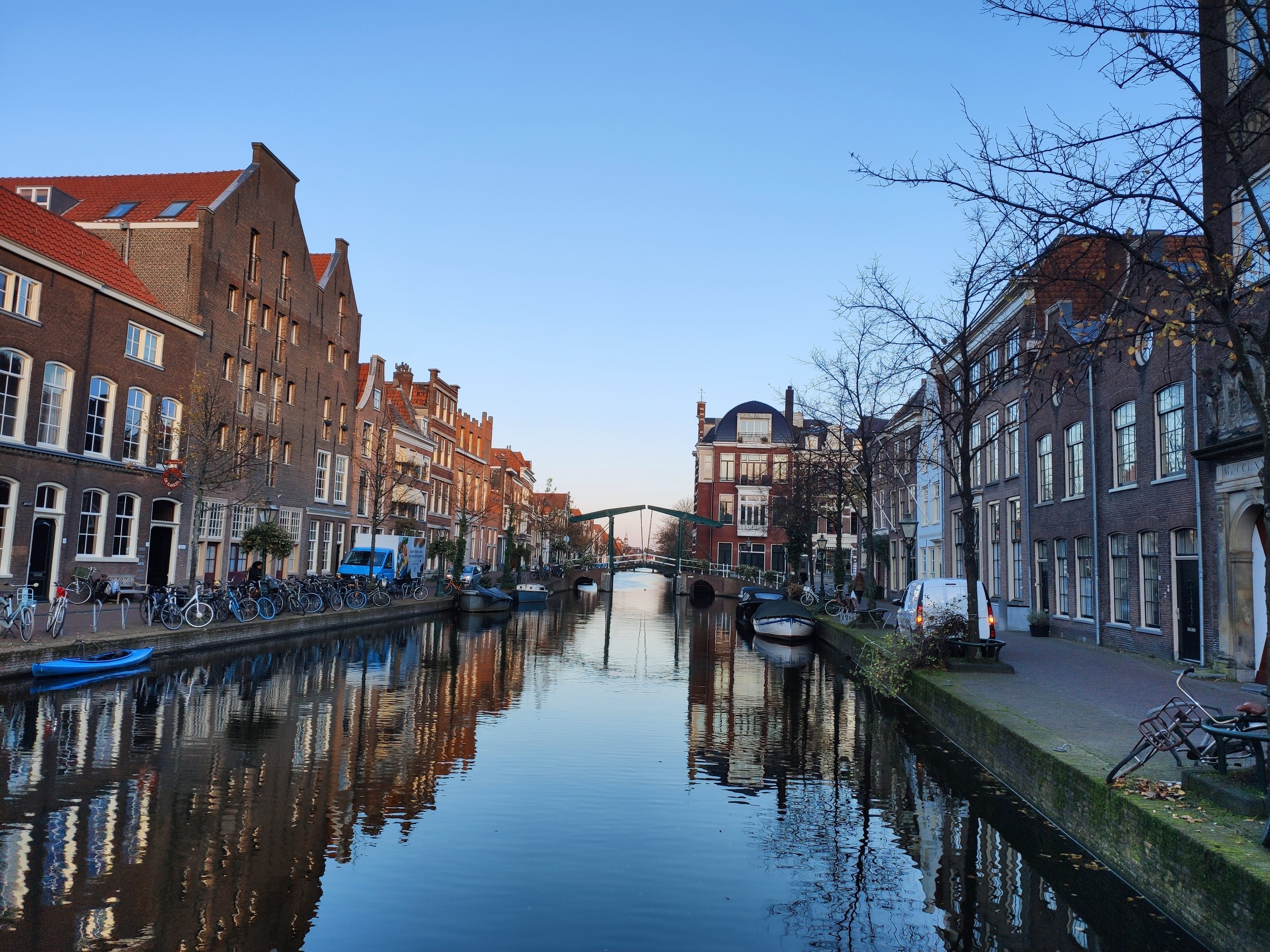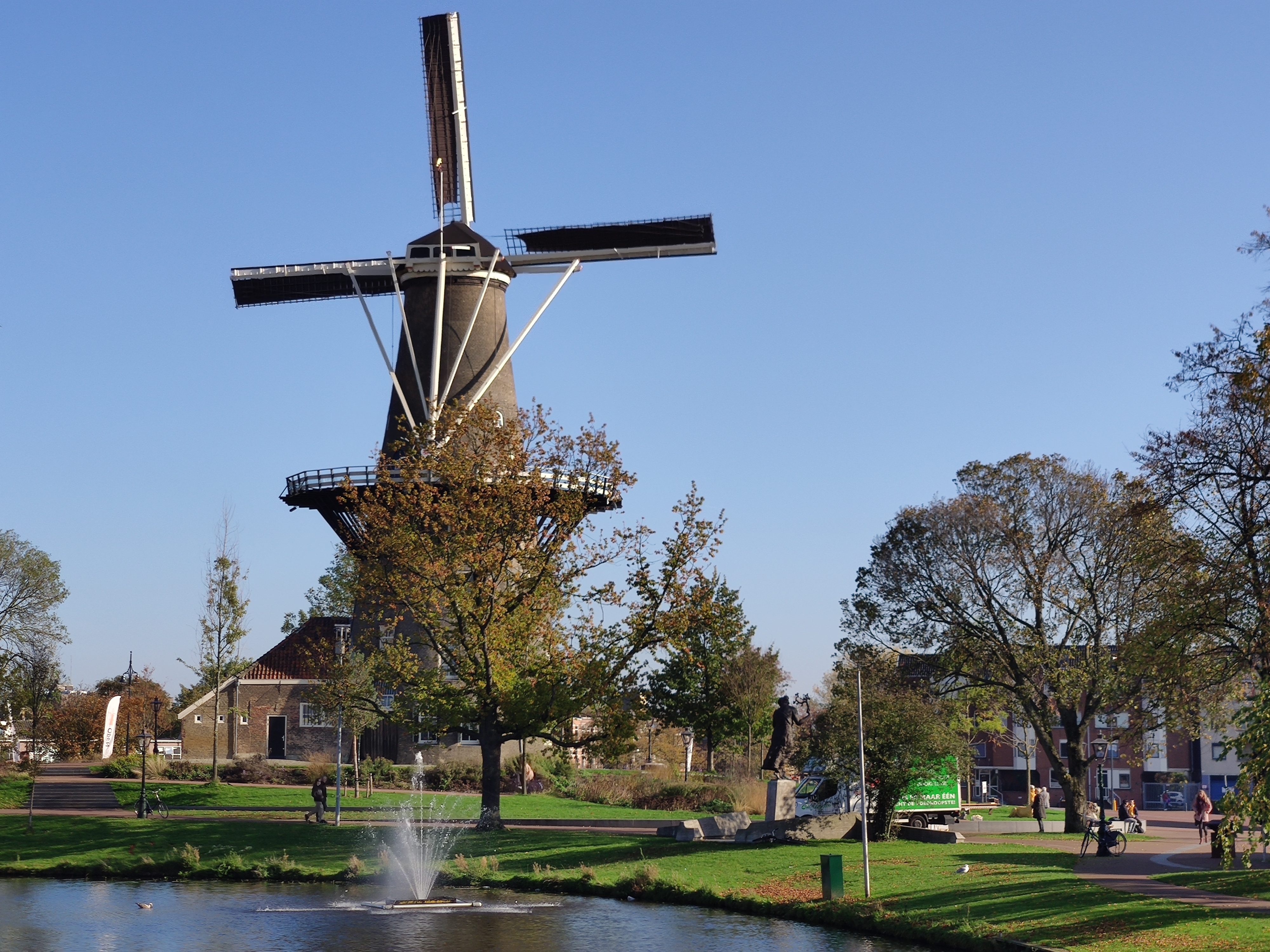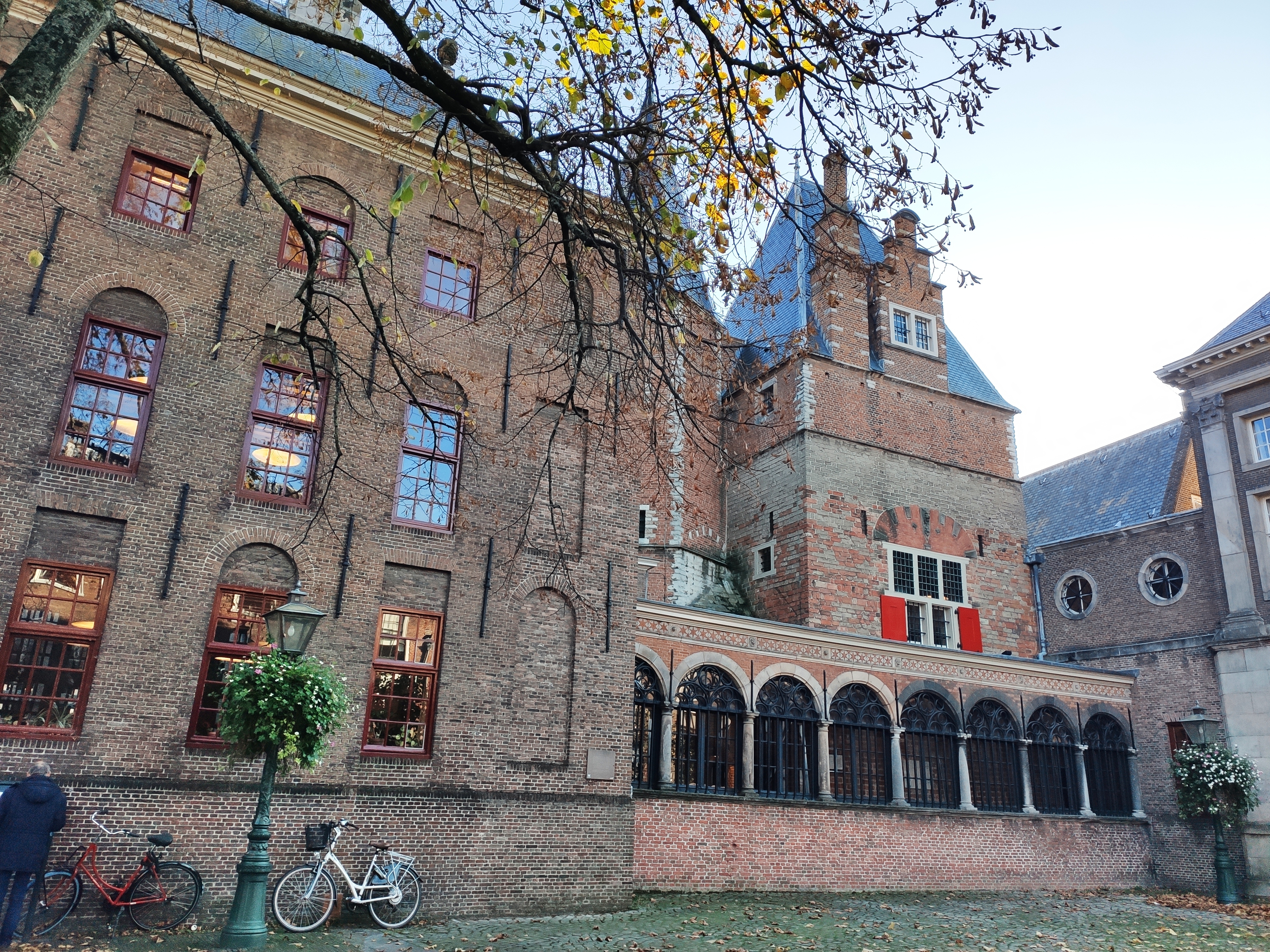Le musée De Lakenhal de Leyde, une ancienne draperie du XVIIè siècle, propose jusqu’au 9 Février 2020 une exposition sur le jeune Rembrandt et le siècle d’or. Ce parcours comprenant plus de 40 toiles, 70 gravures et une dizaine de dessins, s’intéresse à la période de jeunesse de Rembrandt (1624-1634) et à son style unique. Le public pourra également apprécier les oeuvres de ses contemporains tels que Jan Lievens, Gerrit Dou qui fut son premier élève ou encore Jacob Swanenburg. En parcourant la ville de Leyde on comprendra mieux l’histoire et le quotidien du jeune prodige, qui participèrent à en faire une étoile montante de la peinture hollandaise.
Le destin exceptionnel du jeune Rembrandt allait également croiser celui des Pilgrims, protestants d’Europe qui, en fuyant les guerres, les persécutions religieuses et la pauvreté, deviendront les premiers colons des États-Unis d’Amérique. Ils arrivèrent tout d’abord à Amsterdam en 1609 et obtinrent l’autorisation du maire de Leyde de s’installer de façon regroupée dans sa ville dans des Elm houses (logements sociaux). Leur représentant, John Robertson, resta à Leyde pour y mourir en 1625 alors que les membres de sa communauté partirent en 1620 sur le Mayflower en 1620.
Des audaces stylistiques
Rembrandt, fils d’un meunier prospère, eut dès son jeune âge un rapport fusionnel avec son environnement. La biographie de l’artiste écrite par Onno Blom ( Young Rembrandt) met en lumière ses diverses sources d’inspiration.
Le moulin familial s’élevait sur les remparts à l’ouest de la ville, bordé par le Rhin. Rembrandt entendait le sifflement des ailes du moulin, le craquement de la meule broyant le malt tout en observant le ressac et le miroitement de l’eau le long des canaux.
C’est indubitablement l’atmosphère de sa ville natale qui lui inspira la richesse de ses lumières et de sa technique du clair-obscur. Le vendeur de lunettes, toile faisant partie d’une série sur les cinq sens, est certainement une des premières oeuvres connues du jeune Rembrandt que l’on découvrira tout au début de l’exposition au Musée De Lakenhal. Rembrandt n’aura de cesse de renouveler ses expérimentations, s’incluant sous la forme de caméo dans son Leyden history painting de 1626.

PIÈCE D’HISTOIRE AVEC AUTOPORTRAIT DU PEINTRE 1626, Rembrandt. Museum De Lakenhal, Leiden – prêt à long terme Service national du patrimoine culturel
Dans un de ses nombreux autoportraits, le peintre aura recours au manche de son pinceau pour dessiner ses boucles de cheveux en creusant la surface de la peinture. Il emploiera également la technique des jeux d’identité en exécutant des autoportraits ( Self portrait with feathered beret -1635) à l’ aide d’un miroir et en prenant les traits d’un mendiant ou d’autres personnages. Rembrandt, doté d’un grand sens des affaires, comprit très vite l’ intérêt commercial des gravures qui permettaient de garder une trace de ses oeuvres peintes, préalablement vendues à des clients, tout en multipliant ses ventes.
Les années d’apprentissage
L’assise sociale des parents du jeune Rembrandt leur permit d’inscrire leur fils âgé de 7 ans à la Latin school où il étudia le latin et les oeuvres d’Ovide, de Ciceron et de Virgile. L’apprentissage incluait également des leçons d’ art, la culture des civilisations et la religion. Quand Rembrandt exécuta en 1631 la toile Le vol de Proserpine, il avait lu les Métamorphoses d’Ovide. Ses connaissances approfondies de la Bible et de la Mythologie, acquises à la Latin School allaient lui servir grandement dans ses peintures.

LE VOL DE PROSERPINA 1630, Rembrandt. Gemäldegalerie Staatliche Museen Berlin – Preußischer Kulturbesitz
Par la suite, à l’âge de 14 ans, Rembrandt fut envoyé à l’université de Leyde où il ne restera officiellement que deux années, sans doute pour échapper au service militaire. L’université était fortement inscrite dans l’esprit des habitants car elle était le symbole vivant de William d’Orange, son créateur et également libérateur du siège espagnol en 1575. Elle fut fondée au sein de l’église Saint-Pierre ( Pieterskerk) dont les 900 ans d’existence seront célébrés en 2021. Ce lieu allait être un point d’ancrage important pour Rembrandt car c’est à Pieterskerk que ses parents se marièrent et furent enterrés. Au XVI ème siècle, suite aux guerres de religion entre différents groupes protestants, l’église fut abandonnée puis transformée en université. Grâce à l’afflux de nombreux immigrants, des professeurs venus de toute l’Europe vinrent enseigner à l’université.
Hortus Botanicus
Parmi les personnalités éminentes de Leyde, le professeur de botanique Carolus Clusius (1526-1609) venu de Flandre, dessina le jardin botanique attenant à l’université qui comprenait des plantes médicinales mais surtout la plus grande collection de tulipes qui allaient devenir l’icône nationale. La reine des tulipes fut la semper augustus, striée de blanc et de bordeaux. En 1637 le bulbe de cette fleur était aussi cher qu’une maison en bordure du canal! Au XIX ème siècle le parc s’étendit avec la création d’une serre abritant des Victoria Amazonica et des papillons. L’Hortus Botanicus regroupe plus de 10 000 espèces de plantes du sud-est asiatique, du sud de l’Europe et d’Afrique du sud.
La Route Rembrandt
La ville de Leyde, enjambée par 88 canaux tout autour de son centre historique, propose un circuit d’environ 1h50 pour découvrir les divers lieux fréquentés et habités par Rembrandt. Quand il quitta l’université, ses parents lui firent donner des cours de dessin par Jacob Isaaczoon van Swanenburg entre 1620 et 1623. Ce dernier avait été formé en Italie. Rembrandt a très vraisemblablement partagé son premier studio situé à Langebrug 89 avec son ami Jan Lievens. Selon l’auteur Onno Blom, Lievens aurait encouragé Rembrandt à réaliser ses premières peintures autour des 5 sens sur de petits panneaux en chêne. Lievens,dont le frère aîné avait été à la Latin School avec Rembrandt révéla, très jeune, un réel talent de copiste d’oeuvres de maîtres.Il a été souvent difficile d’attribuer certaines oeuvres à l’un ou à l’autre artiste. Rembrandt aurait même peut être antidaté certaines de ses toiles pour qu’elles soient plus anciennes que celles de Lievens et que l’on suppose que ce dernier l’ait copié! Le studio de Rembrandt propose une vidéo très intéressante sur son parcours artistique durant les années qui précédèrent son départ pour Amsterdam en 1631.Le studio continua à fonctionner avec des élèves de Rembrandt avec des variations sur des oeuvres existantes du grand maître.De la maison familiale située à Weddesteeg 29, il ne reste plus qu’une plaque commémorative posée en 1906.
Le buste de Rembrandt
À l’entrée du musée de De Lakenhal de Leyde , on pourra apprécier la très belle sculpture du buste de Rembrandt exécutée en bronze par l’artiste Toon Dupuis. Indépendamment de l’exposition présentée jusqu’au 9 février prochain , le musée présente sept collections comprenant le Berceau de l’âge d’or, l’université de Leyde, Le siège et la libération de Leyde.Le musée propose une application gratuite L@kenhal-app à télécharger gratuitement pour avoir des informations complémentaires sur les lieux.
Les canaux de la ville
Une balade en bateau électrique au toit mobile pour passer sous les ponts restera gravée dans vos mémoires.On comprendra au fil de l’eau l’histoire tourmentée de Leyde par le siège des espagnols et la puissance de l’eau qui fut une arme redoutable pour les habitants de la ville natale de Rembrandt.
*****
Guide pratique
Y aller
Départs en Thalys depuis la gare du Nord jusqu’à Rotterdam puis correspondance pour Leyde.
Se loger
Hôtel Golden Tulip Leiden Centre
Schipholweg 3
2316 Leiden
www.leiden-centre.goldentulip.com
Visiter
Musée De Lakenhal
Jonge Rembrandt,Rising Star
jusqu’au 9 Février 2020
www.lakenhal.fr
Jardin botanique Hortus Botanicus
www.hortusleiden.nl
Se restaurer
Brasserie de Poort
www.poort.nl
Waag Leiden
www.waagleiden.nl
Se balader au fil de l’eau
www.bootjesenbdroodjes.nl
À Lire
Young Rembrandt
de Onno Blom
Editions Pushkin Press
Renseignements et remerciements
www.holland.com
The De Lakenhal museum in Leiden, an old drapery from the 17th century, offers until February 9th 2020 an exhibition on Young Rembrandt and the golden century. This event, comprising more than 40 canvases, 70 engravings and ten drawings, focuses on Rembrandt’s youth period (1624-1634) and his unique style. The public will also be able to appreciate the works of his contemporaries such as Jan Lievens, Gerrit Dou who was his first pupil or even Jacob Swanenburg. As you travel through the city of Leiden, you will better understand the history and daily life of the young prodigy, which helped make him a rising star in Dutch painting.
The exceptional destiny of young Rembrandt would also intersect with that of the Pilgrims, Protestants from Europe who, fleeing wars, religious persecution and poverty, would become the first settlers of the United States of America. They first arrived in Amsterdam in 1609 and obtained permission from the mayor of Leiden to settle together in his city in Elm houses (social housing). Their representative, John Robertson, remained in Leiden to die there in 1625 while members of his community left in 1620 on the Mayflower in 1620.
Stylistic audacity
Rembrandt, the son of a successful miller, had a close relationship with his environment from a young age. The artist’s biography written by Onno Blom (Young Rembrandt) highlights his various sources of inspiration.
The family mill stood on the ramparts to the west of the city, bordered by the Rhine. Rembrandt could hear the whistling of the mill’s wings, the cracking of the millstone crushing the malt while observing the surf and the shimmering of water along the canals.
It is undoubtedly the atmosphere of his hometown which inspired him the richness of his lights and his chiaroscuro technique. A hawker selling glasses, a canvas in a series on the five senses, is certainly one of the first known works by young Rembrandt that we will discover at the very start of the exhibition at the De Lakenhal Museum. Rembrandt will continue to renew his experiments, including himself in the form of cameo in his Leyden history painting of 1626.
In one of his many self-portraits, the painter will use the handle of his brush to draw his hair curls by digging the surface of the paint. He will also use the technique of identity games by performing self-portraits (Self portrait with feathered beret -1635) using a mirror and taking the features of a beggar or other characters. Rembrandt, endowed with a great business sense, quickly understood the commercial interest of the engravings which made it possible to keep track of his painted works, previously sold to customers, while increasing his sales.
Years of apprenticeship
The social rank of young Rembrandt’s parents allowed them to enroll their 7 year old son in the Latin school where he studied Latin and the works of Ovid, Ciceron and Virgil. Learning also included art lessons, the culture of civilizations and religion. When Rembrandt executed in 1631 the canvas The Flight of Proserpina, he had read Ovid’s Metamorphoses. His in-depth knowledge of the Bible and Mythology, acquired at the Latin School, would serve him greatly in his paintings.

Abduction of Proserpina- 1630, Rembrandt. Gemäldegalerie Staatliche Museen Berlin – Preußischer Kulturbesitz
Subsequently, at the age of 14, Rembrandt was sent to the University of Leiden, where he officially remained only two years, probably to escape military service. The university was strongly inscribed in the minds of the inhabitants because it was the living symbol of William of Orange, its creator and also liberator of the Spanish siege in 1575. It was founded within the Saint-Pierre church (Pieterskerk) whose 900 years of existence will be celebrated in 2021. This place was to be an important anchor for Rembrandt because it was in Pieterskerk that his parents were married and were buried. In the 16th century, following the wars of religion between different Protestant groups, the church was abandoned and then transformed into a university. Thanks to the influx of many immigrants, professors from all over Europe came to teach at the university.
Hortus Botanicus
Among the eminent personalities of Leiden, the professor of botany Carolus Clusius (1526-1609) from Flanders, designed the botanical garden adjoining the university which included medicinal plants but especially the largest collection of tulips which were to become the icon national. The queen of tulips was the semper augustus, streaked with white and burgundy. In 1637 the bulb of this flower was as expensive as a house by the canal! In the XIXth century the park expanded with the creation of a greenhouse sheltering Victoria Amazonica and butterflies. The Hortus Botanicus brings together more than 10,000 species of plants from Southeast Asia, Southern Europe and Africa
The Rembrandt Route
The city of Leiden, spanned by 88 canals all around its historic center, offers a circuit of around 1h50 to discover the various places frequented and inhabited by Rembrandt. When he left university, his parents had him give drawing lessons by Jacob Isaaczoon van Swanenburg between 1620 and 1623. The latter had been trained in Italy. Rembrandt most likely shared his first studio located in Langebrug 89 with his friend Jan Lievens. According to author Onno Blom, Lievens would have encouraged Rembrandt to make his first paintings around the 5 senses on small oak panels. Lievens, whose older brother had been at the Latin School with Rembrandt, revealed from a very young age a real talent as a copyist of masterpieces. It was often difficult to attribute certain works to one or the other artist. . Rembrandt might even have backdated some of his paintings so that they are older than those of Lievens and that we suppose that the latter copied it! Rembrandt’s studio offers a very interesting video on his artistic journey during the years preceding his departure for Amsterdam in 1631.The studio continued to work with Rembrandt students with variations on existing works of the great master. located at Weddesteeg 29, there remains only a commemorative plaque posed in 1906.
The bust of Rembrandt
At the entrance to the De Lakenhal museum in Leiden, one can appreciate the very beautiful sculpture of the bust of Rembrandt executed in bronze by the artist Toon Dupuis. Apart from the exhibition presented until February 9, the museum presents seven collections including the Cradle of the Golden Age, the University of Leiden, The Siege and Liberation of Leiden. The museum offers a free application L @ kenhal-app to download for free for additional information on places.
The city canals
An electric boat ride with a mobile roof to go under the bridges will remain etched in your memories. We will understand over the water the tormented history of Leiden by the siege of the Spanish and the power of water which was a formidable weapon for the residents of Rembrandt’s hometown.
*****
Practical Guide
How to get there
Departures by Thalys from Gare du Nord to Rotterdam then connection to Leiden.
Accommodation
Golden Tulip Leiden Center Hotel
Schipholweg 3
2316 Leiden
www.leiden-centre.goldentulip.com
What to see
Lakenhal Museum
Jonge Rembrandt, Rising Star
until February 9, 2020
www.lakenhal.fr
Hortus Botanicus
www.hortusleiden.nl
Restaurants
Poort Brewery
www.poort.nl
Waag Leiden
www.waagleiden.nl
Stroll along the water
www.bootjesenbdroodjes.nl
To read
Young Rembrandt
by Onno Blom
Pushkin Press editions
Information and acknowledgments
www.holland.com









0 commentaires